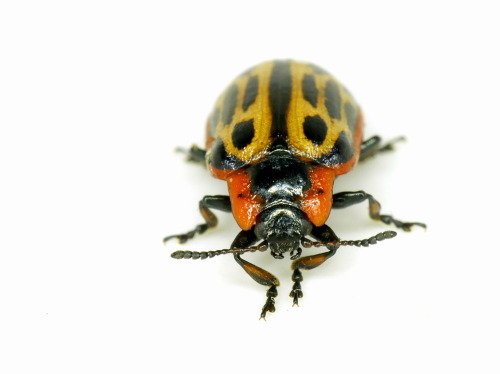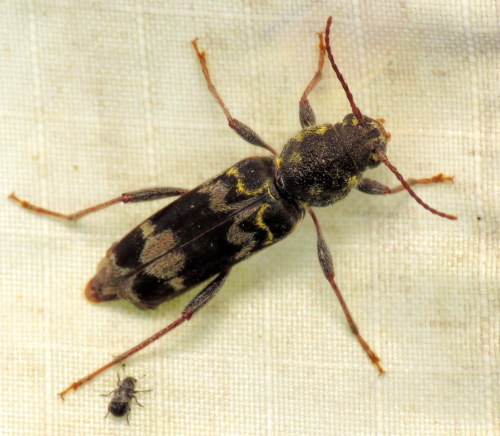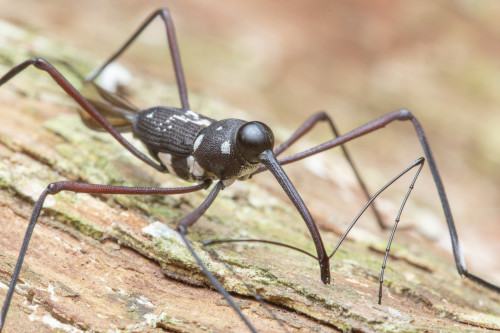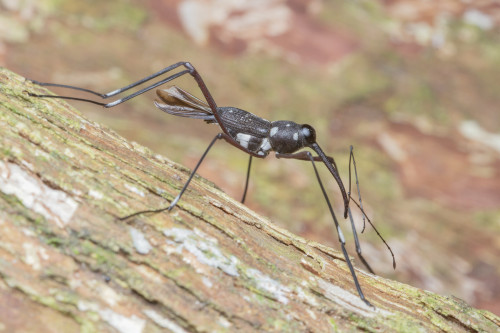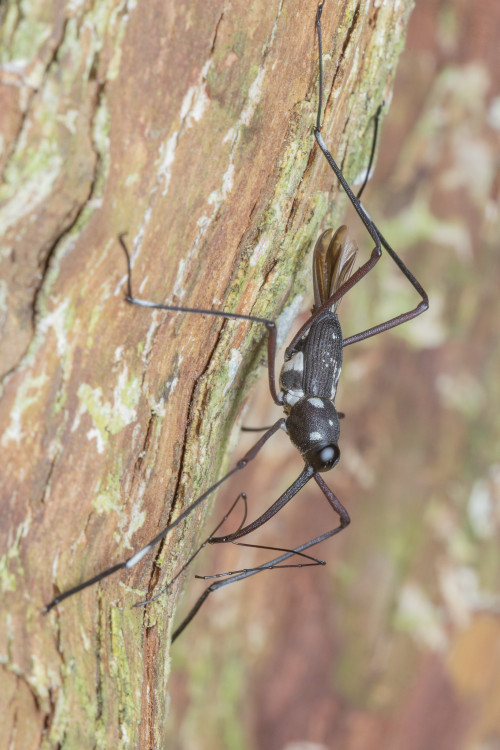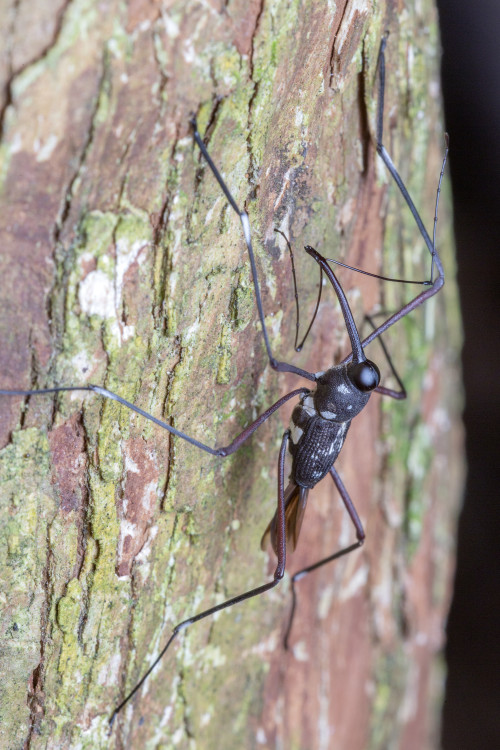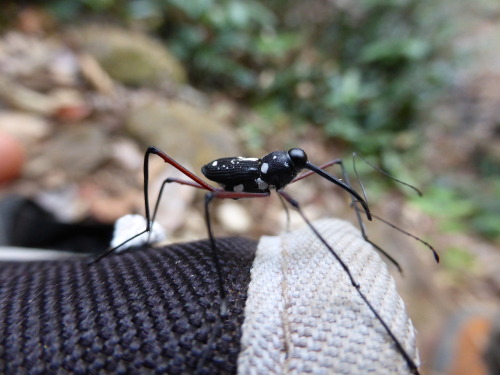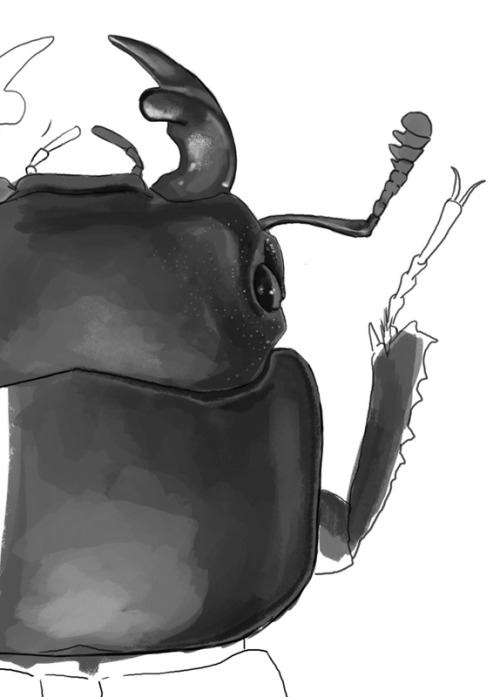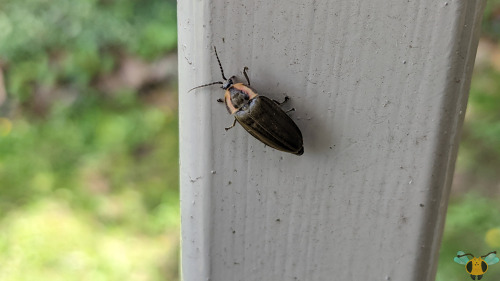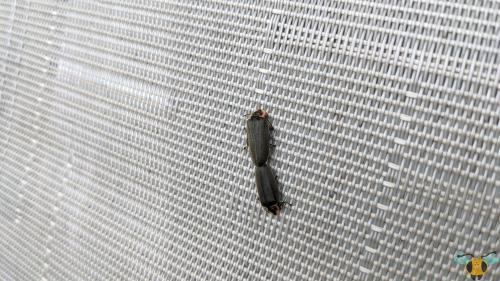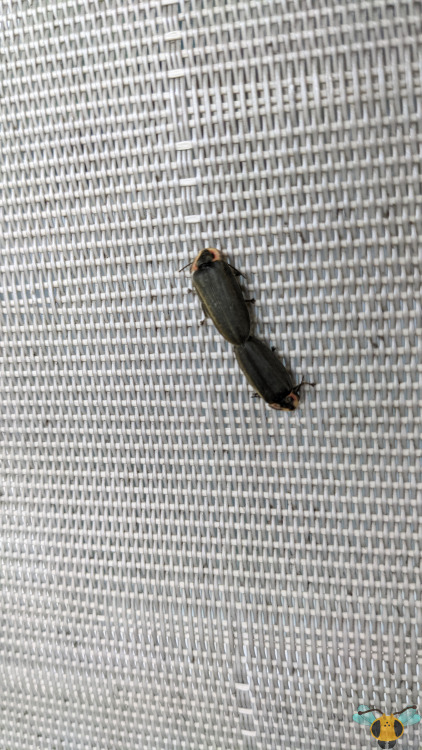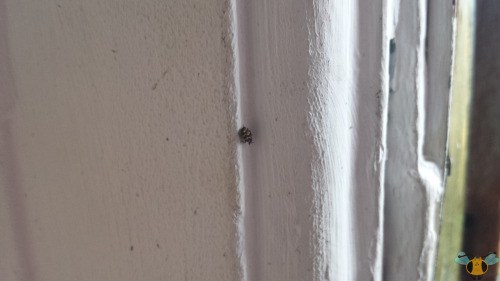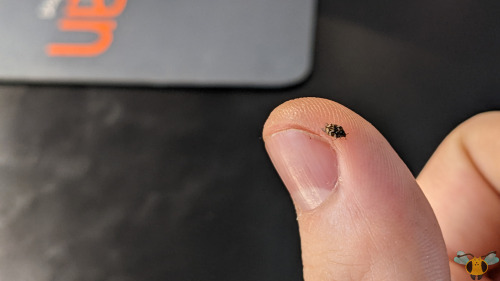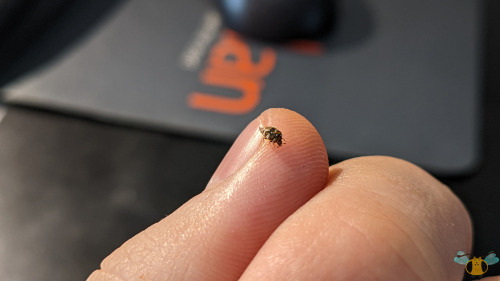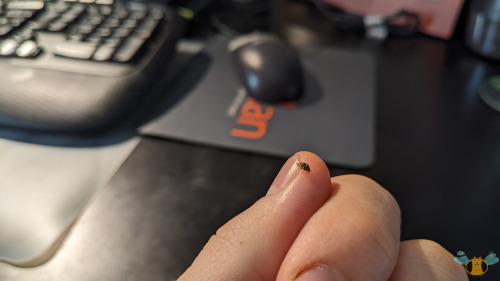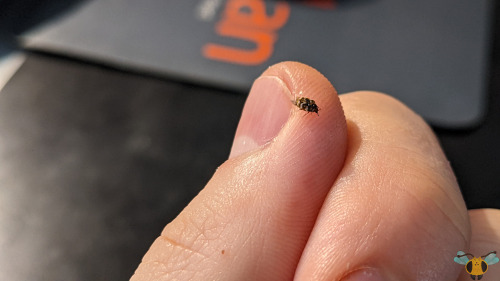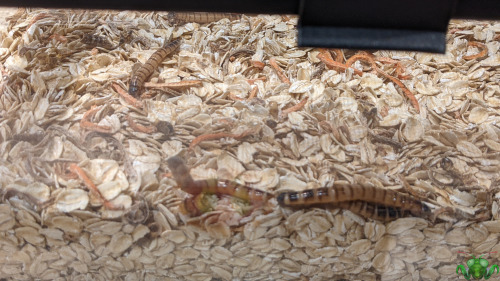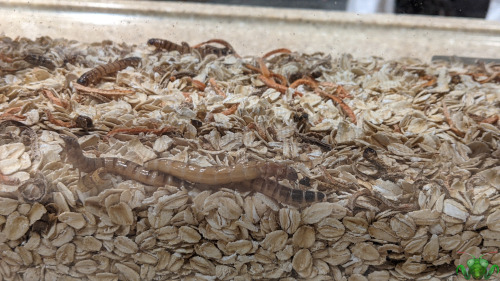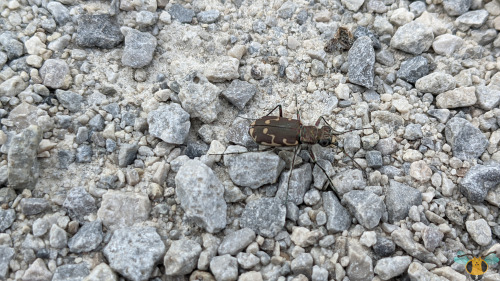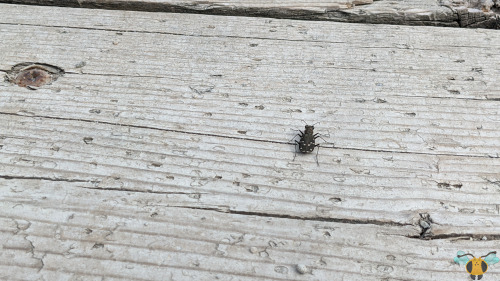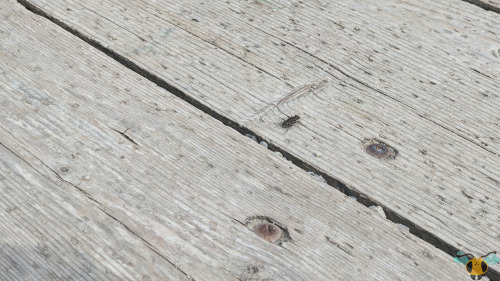#coleoptera
Pleasing Fungus Beetle - Erotylidae
Pleasing fungus beetles of the family Erotylidae (Coleoptera) are easily recognized by their usually red, orange, yellow or purple bright color combined with black, forming patterns of stripes, spots or rings.
Their common name is because these beetles are mycophagous, which means that they eat fungus, and the fruiting bodies of mushrooms provide the only food for both larvae and adults. In fact, Erotylidae is a very important part of the mycophagous fauna in the tropics, and are largely responsible for recycling the nutrients, which are absorbed by fungi during decomposition of organic matter, and dispersing them through out the food chain.
The beetles copulate on or near the host-fungus. Fertilized female lay eggs into the hymenophore or directly on the fructification, and larvae feed on or inside the fungus, devouring all its available parts.
This one purple Pleasing Fungus Beetle in the photos could be ErotylusorGibbifer.
Photo credits: ©Shirley Sekarajasingham | Locality: Vaupes River, Mitu area, Amazon Basin, eastern Colombia (2011) | [Top] - [Bottom]
Post link
Calligrapha verrucosa “Warty Willow Leaf Beetle” Chrysomelidae
Missoula, MT
May 26, 2016
Robert Niese
Caught, in flagrante delicto, mating right on the beach! Egads! These indiscreet little beetles are relatively closely related to those Cottonwood Beetles I posted yesterday. Their genus name “Calligrapha” is a reference to the beautiful calligraphic script on the backs of many species. This species’s coloration is not quite as script-like, but it definitely still appears painted. I’ll post some portraits later! These beetles are most common in the Northern Rockies of Montana, Alberta, and Saskatchewan, but, according to some older sources, their range is far broader, stretching from Nebraska to California to Alaska. If you have photographs of these beetles please submit them to me to supplement our scientific understanding of their distribution!
Post link
Chrysomela scripta “Cottonwood Leaf Beetle” Chrysomelidae
Missoula, MT
April 22, 2016
Robert Niese
These lovely beetles can spend their entire life cycles living off of a single poplar or cottonwood tree. Females lay their eggs in clusters on the undersides of leaves. Those eggs hatch and the larvae begin feeding on the leaf tissues until nothing but a skeleton of veins remains. Then, they pupate into adults which will continue the process of defoliating the tree by eating the thick veins and midribs left behind by the larvae. Some small saplings can be killed by a particularly hungry population of breeding Cottonwood Leaf Beetles. This species may not be present in the PNW west of the Cascades. If you discover them there, please let me know!
Post link
Calligrapha verrucosa “Warty Willow Leaf Beetle” Chrysomelidae
Missoula, MT
May 26, 2016
Robert Niese
I couldn’t decide which photo i liked best, so I had to post another portrait shot of this lovely beetle. The genus name “Calligrapha” is a reference to the beautiful calligraphic script on the backs of many species. This species’s coloration is not quite as script-like, but it definitely still appears painted. These beetles are most common in the Northern Rockies of Montana, Alberta, and Saskatchewan, but, according to some older sources, their range is far broader, stretching from Nebraska to California to Alaska. If you have photographs of these beetles please submit them to me to supplement our scientific understanding of their distribution!
Post link
Calligrapha verrucosa “Warty Willow Leaf Beetle” Chrysomelidae
Missoula, MT
May 26, 2016
Robert Niese
The genus name “Calligrapha” is a reference to the beautiful calligraphic script on the backs of many species. This species’s coloration is not quite as script-like, but it definitely still appears painted. These beetles are most common in the Northern Rockies of Montana, Alberta, and Saskatchewan, but, according to some older sources, their range is far broader, stretching from Nebraska to California to Alaska. If you have photographs of these beetles please submit them to me to supplement our scientific understanding of their distribution!
Post link


Grapevine Beetle
Pelidnota punctata
he is my new best friend
A couple of beetles just doing their thang.
I think it must be green dock beetles that are appearing red from the light. If any one else knows otherwise please give me a heads up :) They were in Falmouth, Cornwall.


the Dark Euphoria (Euphoria sepulcralis)- the beetle with the edgiest name
(Florida, 3/13/21)

Thick-legged flower beetle (Oedemera nobilis)
a male with swollen femora

Byturus ochraceus
The six spotted tiger beetles are having a great spring. They are frantic little predators.
#cicindela #arthropods #arthropodsanonymous #tigerbeetle #nature #spring #iridescent #coleoptera #illinois #forest #biodiversity #predator #insects #insectagram #insectsofinstagram
Post link
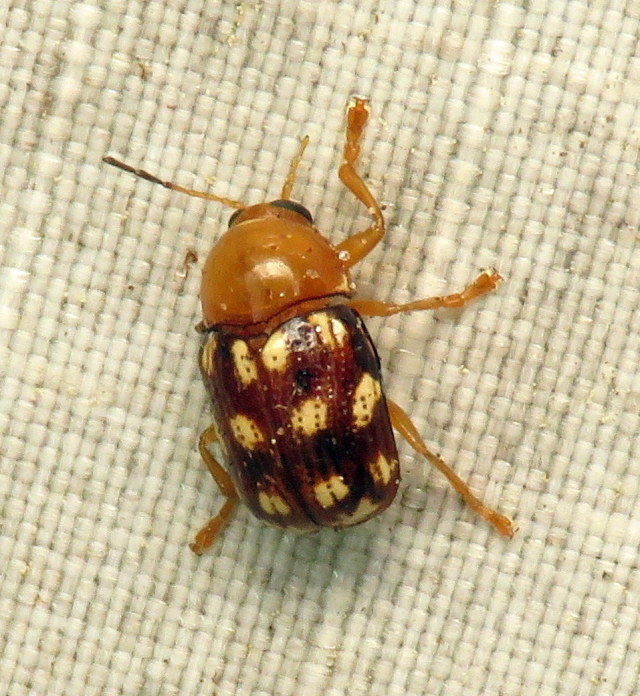
Bug of the Day
Look at this little polka-dotted nugget of awesomeness. LOOK AT IT!!!
Abbot Handerson Thayer and others, INSECTS— Colored beetles, landscape, study folder for book Concealing Coloration in the Animal Kingdom, n.d., various media and collage on paperboard, Smithsonian American Art Museum, Gift of the heirs of Abbot Handerson Thayer
Post link
Bug of the Day
A rustic borer (Xylotrechus colonus) and tiny fren
(tiny fren is a fungus weevil, Ormiscus saltator - thx to Tom Murray for the id!)
Post link
Greta Thunberg, the 17-year-old environment activist, has inspired thousands of people across the world, now, that effort has been offset, as two species have been named after her, and that list could probably increase.
From the forests of Nairobi, Kenia, and inspired by its labour, this tiny beetle has been named Nelloptodes gretae, and belongs to the Ptiliidae family, a highly diverse group of minute beetles, with over 400 species within, but is was stored unnamed in the Natural History Museum of Londo’s collection after it was collected in mid 60’s , until late 2019, when is was formelly described and named by researches at NHM.

- The tiny Nelloptodes gretae, measures 0.79 millimetres long, and it has no eyes or wings.
Greta’s own passion has inspired other scientists, who named a microsnail as Craspedotropis gretathunbergae, honouring her. This tiny snail inhabit Borneo tropical rainforests, and is very sensitive to the droughts and temperature extremes that are likely to be more frequent as climate change continues, comment dutchs researchers at Taxon Expeditions, who made the discovery
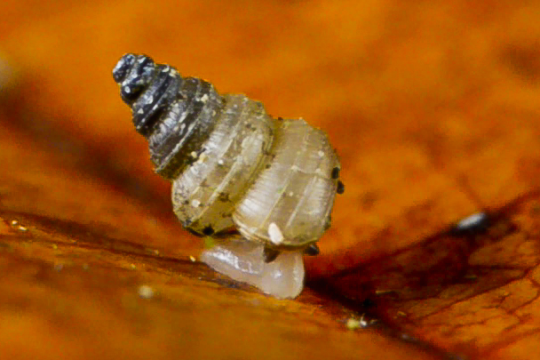
-Craspedotropis gretathunbergae has a pale, spire high conical shell, and as orther microsnails, measures about two millimeters. Photograph by Pierre Escoubas. See video of a living individual here
- reference (Open Access):
- Menno Schilthuizen et al. 2020. Craspedotropis gretathunbergae, a new species of Cyclophoridae (Gastropoda: Caenogastropoda), discovered and described on a field course to Kuala Belalong rainforest, Brunei. Biodiversity Data Journal
- -Michael, 2019. Studies of Ptiliidae (Coleoptera) in the spirit collection of the Natural History Museum, London, 6: New species and records collected by W.C. Block in Kenya and Uganda, 1964–1965. Entomologist’s Monthly Magazine
Post link
Is it too soon to share another awesomely creative piece of furniture? No way! This one-of-a-kind insectoid armoire is called the BUG and it was designed Latvian designer Janis Straupe of True Latvia. Full of customizable shelves, drawers, cubbies and even a few secret compartments, it’s a beautifully functional piece of furniture as well as an amazing work of art.
Click here to learn more about the BUG and its myriad features.
If only Kafka could’ve see this…
[viaYanko Design]
Post link
These are adults of Dineutus sp., a genus of water beetle in the whirligig family: Gyrinidae. They are a common sight on the surface of many water bodies, which they are especially suited for. Take special notice of their compound eyes. A set of eyes on top that looks up at the air, and a set of eyes on bottom that looks into the water.
The whirligig family gets its name from the rapid circular swimming movements performed by these beetles. They are fast swimmers, up to 1m/s or 2.3mph.
Though they spend most of their time on the surface breathing air, they can dive into the water to hunt prey, trapping an air bubble under their wings for breathing purposes.
The adults will eat just about anything available, but nothing eats them, due to defensive secretions that repel predators.
Order: Coleoptera
Family: Gyrinidae
Genus: Dineutus
Collected in the lower Hudson River, NY.
Post link
Weevil, Mnemynurus sp. by Andreas Kay
Via Flickr:
from Ecuador: www.youtube.com/AndreasKay
Tortoise Beetle by Andreas Kay
Via Flickr:
from Ecuador: www.youtube.com/AndreasKay
La tête dans les nuages, May 2014.
(Nikon D90 - 90mm f/2.8 Di USD MACRO 1:1)
Do not hesitate to join me on Facebook too : https://www.facebook.com/MDupouyPhotography
All my photos can be purchased as prints. Prices are available online HERE.
Post link
StudyingDorcus parallelipipedus
___________________
I wish to let you know that I’m doing SKETCH REQUESTSfor every 5 dollar (or more) Patron on Patreon, every 3 months. :) It would mean each sketch would be a 15$ priced commission. PRETTY CHEAP.
If I reach the first goal the TUTORIALS WILL BE BACK, and those seemed to be very popular back in 2014 when I was doing them.
For now I restrict myself to art tips and drawing postings on Patreon with higher res. The requests are the main exclusive prize for the Patrons.
Thanks for your time guys! Cheers
https://www.patreon.com/psamophis
I wish to thank my Patrons for supporting my work. Thanks to you guys I’m continuing doing these XD
Post link
Winter Firefly - Ellychnia corrusca
Let’s have one more set of pictures from the Muskoka visit to round things out, shall we? Not to toot my horn but I’m very proud of Picture 1 with opened wings and exposure to the abdomen hidden beneath the shell. Interestingly, there was a short pause after opening the wings before taking flight. Anyways, the beautiful night sky of cottage country (which is dotted with many stars unobscured by light pollution) is the perfect environment for the illumination of insects like this one. Or at least it would be if this specie of Firefly was able to light up its rear as the name might hint. For this specie, only the larvae and pupae can glow, the adults losing this ability upon maturation. It’s not all bad news though since this Beetle spends most of its time as a larva anyways, scourging around the leaf litter and under logs in search of insects and slug to eat. Their diet changes upon reaching adulthood, shifting from carnivorous to hungering for sap and flowers. If you go looking for the larvae, know that they are quite a rare find. Fortunately you’ll know them when you see them as they might glow and they closely resemble Trilobite Beetles. If you can’t find the larvae, adults will be more out in the open. They fly during the daytime and crawl about on trees, leaves and man-made structures.
The adults should be recognizable enough with the colors of their armor, their antenna type and their (relatively) large size compared to other Fireflies. The specimens you see before you are likely those that have emerged after an overwintering stint as adults. It’s the ability to survive the harsh winter that gave this Beetle its name, and with the weather turning warm, it’s time to find a mate. If the temperatures can hold steady, there could be a second generation, but these are another generation from the eggs laid earlier in the year. Nevertheless, the Fireflies that emerged from winter waste no time forming mating pairs. It’s not really possible to discern which Beetle is the female or the male in these pictures (you’d need to flip them over to check the final abdomen segment which would be quite rude). To avoid sitting on them, you can persuade them to climb on a stick and relocate them to a more green environment…as I did. I was called up to the balcony to investigate what looked like a Caterpillar, but was in fact the Beetles you see before you. I can sort of see the resemblance. They can move together (even turning without a break) to escape a perceived threat, though it looks more like one is taking the lead and dragging the other along. While transporting them, the leaders switched occasionally, resulting in a change of direction. Fascinating!
Pictures were taken on May 28, 2022 in Muskoka with a Google Pixel 4. For anyone interested in more information, I enjoyed reading this paper by Rooney and Lewis covering the Winter Firefly.
Post link
Varied Carpet Beetle - Anthrenus verbasci
I was looking through the insect orders and families that have been covered here and was surprised to find that I haven’t covered these little guys. As it turns out, I don’t have too many pictures of them either which makes me sad. I’ll have to come back and add more Beetles to this post as I take more pictures! Though fairly small, the checkered pattern on their back makes the adults easy to spot, but you’d need a powerful magnifier to see the fine details such as the position of their eyes and their tiny antennae. I’m not sure how common they are in other parts of Canada or North America, but at home there’s always a few individuals that are found yearly, crawling around just before and after the winter. The ones that emerge in time for spring get to enjoy the outdoors while those that emerge before winter will need to remain indoors if they wish to roam around. They’ve obtained a bit of a status as a pest, as the household environment can provide these Beetles and their future larvae with nourishment (more so the latter, adults (like the individual in Picture 1) prefer to feed on pollen). As that wonderful name “Carpet Beetle” suggests, these Beetles may have a taste for human furnishings, which can make them pests.
Don’t let these images undersell just how small the adults truly are! They are much smaller than any other Beetles shown here, including the Yucca Beetle! Like the Yucca Beetle, a few may be adorable, but an aggregation of them may present issues. To clarify, these Dermestidaefamily Beetles may occasionally eat some furnishings because the hungry larvae need a diet of protein to grow. In nature, their protein sources come from dried fur, fallen hairs, shed skin, dandruff, wool, silk; anything organic in nature really. As such, when the larvae are abundant in a household, they may turn their attention to materials that fit this description such as clothing, loose fabric, and yes, carpets! They’ll need a source of water too. Best thing you can do if you find them is to vacuum them up, but unless there are many little larvae wriggling around, you may not find them. If you suspect you have any, look for millimetric grubs coated in small hairs. They’re quite small, so small in fact that the adults may use bird’s nests as locations to lay eggs. Just like in the Lord of the Rings: The Two Towers film, “The closer we are to danger, the further we are from harm”…”you are very small”. Considering the visual acuity of birds, its a risky proposition, laying eggs next to a predator, but these Beetles seems to make it work.
Update:7 more pictures added on Friday May 13, 2022. Hopefully this better conveys the size of these little beans. While they do seem tick-like, they do not bite. You can even see the little wings poking out.
Pictures were taken on April 22, 2019 with a Samsung Galaxy S4 and May 18, 2021 with a Google Pixel 4. Update pictures were taken on May 12, 2022.
Post link
Superworm (Zophobas Darkling Beetle Larva) - Zophobas morio
Been awhile since I’ve done two posts in a day, but I’m really excited to share these educational insects with you! Over the weekend I got the chance to visit the Ontario Science Centre to see their Bug Lab Exhibition. The showcases were created by Te Papa, the museum of New Zealand in collaboration with Weta, both coming together to make something absolutely astounding, engaging and interesting. The exhibitions feature large models of insects in their environment and exhibits that demonstrate the magnificence of insects and how much there is to learn about them and apply that knowledge to our own growth as a society. It’s mostly geared towards children, but I thoroughly enjoyed it myself, and I’m very grateful I was able to go. Images of the showcase will arrive on the blog next Tuesday (can’t go spoiling things just yet), but in the meantime we have familiar lab insects to see from the live showcase, many of them a familiar sight in the educational environment. Since these insects belong to the Centre, I’ve labelled them with the mantis logo. During the live showcase, the presenter was kind enough to allow us to take pictures of these wriggling creatures after introducing them to the audience.
After first seeing them at the ROM before in their darkened, armored adult form, I’m at long last able to showcase the larval stage. No handling as they have the tendency to bite. Nicknamed “Superworm”, these insects are commonly used as food for birds, reptiles and amphibians given their nutritional value, soft shell, ease of rearing and their sheer numbers and size. This has given them the moniker “mealworms”. However, these Darkling Beetle larvae are not reared for the purpose of food, but rather for the showcase of insect metamorphosis. While many kids are familiar with the change of CaterpillartoButterfly, the idea of Beetles becoming adults from a worm-like form is almost alien to them. In fact, one kid asked if these creatures were snails. Delightful! Perhaps seeing an adult Beetle would’ve brought everything full circle and maybe one of their pupae too. I’d have also liked to see a showcase of metamorphosis in the presentation as well given how prevalent it is to the world of insects. Especially these insects have to be relatively alone (in their terrarium) in order to pupate successfully (they tend not to if overcrowded with other larvae, though there is a lot of room in this home). Perhaps this strategy comes about as a means of protection from being eaten by a cousin? Or perhaps there just isn’t enough pressure to pupate yet? Either way, the ability to delay their maturity may come in handy for our own benefit.
Pictures were taken on February 20, 2022 at the Ontario Science Centre using a Google Pixel 4. Please go and visit the bugs while you can!
Post link
Cicindelinae Twelve-Spotted Tiger Beetle - Cicindela duodecimguttata
Happy Lunar New Year! It’s not often this blog celebrates an occasion like this (usually it’s just the change of seasons or other specific days), but if the days align, I’m happy to make this a habit. As we enter the year of the Tiger, this week there will be 2 posts based on the namesake of this new year! And so, today we return to an insect that best exemplifies a tiger’s ferocity, hunting prowess and fearlessness: a mighty Tiger Beetle! While they lack the tiger’s stripes (and a thick fur coat) they more than earn their name from their predatory habits of spotting prey with their huge eyes, chasing it down with alarming sprint speed and then slicing it up with their sharp, sickle-shaped mandibles! They are both quick in the air and on the ground making photography difficult, but not impossible. It’s quite simply remarkable! Not merely because of their speed, but also since the run undeterred by difficult terrain such as the gravely road shown in some of these pictures. It may only be in short bursts, but that dash is more than enough to corner and catch an unsuspecting insect in much the same way a tiger would lunge after a large mammal! Well, within reason: there is a difference between active hunting vs. ambush hunting, and Ground Beetles aren’t much for ambushing.
With terrain in consideration, I do remember that the Beetles pictured here tend to use their sprinting ability more on the wooden bridge, while those on the pebbled sections of the gravel road preferred flying away from the camera. Seems these hardy joggers are also aware of the problems terrain can bring to the hunt. Not only are these insects carnivorous as adults, they have a vicious streak in their larval stages as well. Given that their metamorphosis to maturity can take 2 years, that’s a whole lots of insects to eat. If you find yourself digging in Tiger Beetle territory, you may find their grubs. While tough to identify with specificity, the grubs of Cicindelinae (the subfamily) are easy to know for sure as they have large heads relative to body size and a hooked “humpback” 5th segment on their body with they use to anchor themselves in soil or (possibly) to snatch up insects. The larvae spend their lives underground, only venturing to the surface if they need to relocate from their deep burrow. In a few years, they can successfully hunt and pupate their way into adulthood, rewarding them with longer teeth, a hard shell and swift wings! Pay close attention to those lustrous shells, as those will give you your first clues as to what Beetle you’ve found!
Pictures were taken on September 11, 2021 in Kleinburg with a Google Pixel 4. Coming on Friday, another insect with aspects of the tiger in honor of this new year! What could it be?
Post link




